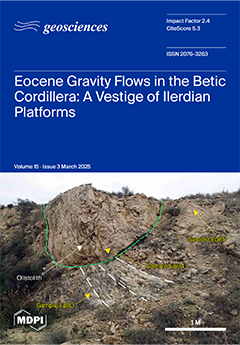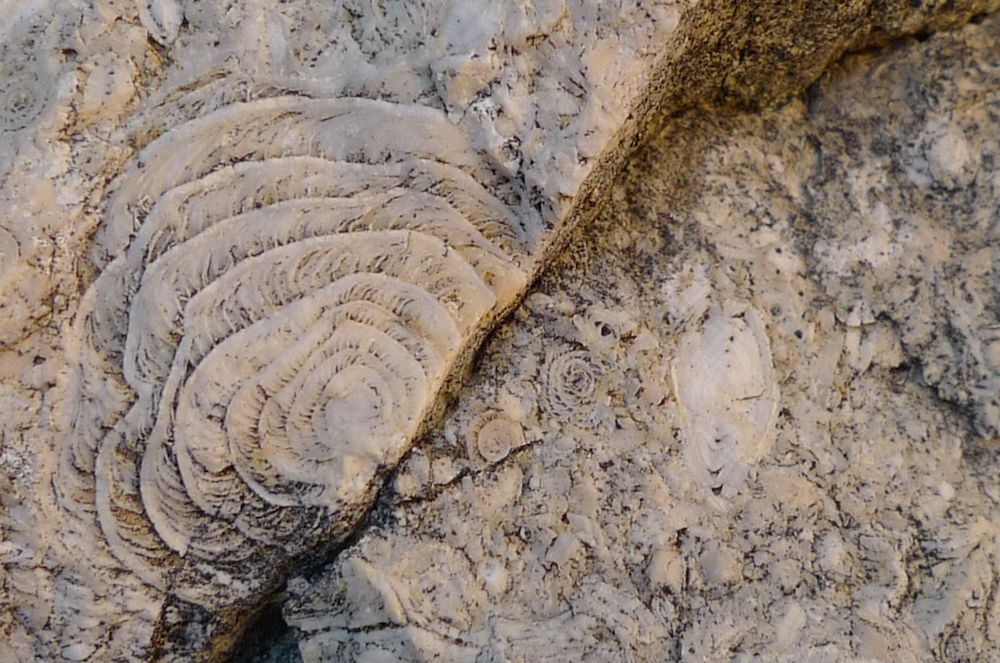Home » Posts tagged 'South Iberian paleomargin'
Tag Archives: South Iberian paleomargin
Geosciences, Volume 15, Issue 3 (March 2025)
The march issue of the Geoscience journas has a cover story dealing with the newly published paper in that issue by Tosquella et al. (2025) of our group. In the Betic-Rif Cordilleras the Eocene platforms started in the Cuisian after a gap including the Ilerdian. An Eocene succession with gravity flows consisting of turbidites and olistostromes was detected in the Aspe-Terreros Prebetic section (External Betic Zone). In one of the turbidites, we dated the middle Ilerdian, on the basis of LBF, representing a vestige of a missing Illerdian carbonate platform. The microfacies of these deposits rich in LBF have been described and documented. The gap in the sedimentation and absence of Ilerdian platforms in the Betic-Rif have been related to the so-called Eo-Alpine tectonics (Cretaceous to Paleogene) and sea-level variations contemporarily with the establishment of shallow marine realms in the western Tethys.

Paleocene-Eocene evolution of the Prebetics (South Spain) and comparison with other western Tethyan margins
Thirteen Paleocene-Eocene sections have been studied along the Prebetic Domain (South Iberian Margin) in the Alicante, Murcia, Granada, and Jaen Sectors. The sedimentary realms (mostly consisting in 15 shallow marine Lithofacies) and the tectono-sedimentary evolution were characterized. Three informal stratigraphic units were proposed and dated with planktic foraminifera, calcareous nannoplankton, and Larger Benthic Foraminifera (LBF): (1) lower marly-clayey fm; (2) intermediate limestone-calcarenite fm; and (3) upper marly-clayey fm. The stratigraphic architecture shows diachronous boundaries and lateral passages, representing the internal and external platform (upper slope in a few cases). The lower marly-clayey fm is upper Paleocene to middle Lutetian, the intermediate limestone-calcarenite fm ranges from lower Ypresian to lower Bartonian, while the upper marly-clayey formation is lower Lutetian to lower Priabonian. The diachronism can be due to the inherent sedimentary paleoenvironment changes and to climatic-tectonic interferences. The noticeable thickness variations of sedimentary successions in the studied sections could indicate a synsedimentary tectonics with upward and downward movements of blocks or folds. During the Paleocene-Eocene, the studied area was part of the meridional belt of platforms in the western Tethys. A comparison with other sectors of the central-western Mediterranean area has been performed to evidence synchronous events at Tethyan scale. The compared margins experienced a common pre-foredeep evolution affected by the Eo-Alpine tectonics (Cretaceous to Paleogene) contemporaneously to the establishment of shallow and deep palaeoecological realms. In the case of shallow sedimentary successions, LBF and corals are registered. Comparable gaps in sedimentation are recorded in most of the correlated domains.

Recent Comments